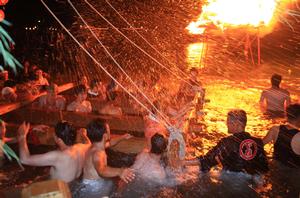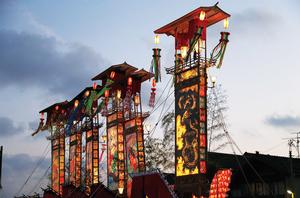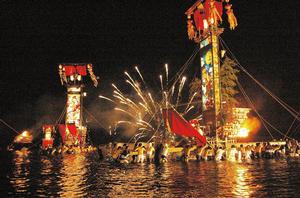π Festival - Horyu Tanabata Kiriko Festival, Suzu City



Applicable Dates :
Available the 7th of August through the 8th of August
Itinerary Type :
Festivals
Number of Stops
2
Est. Drive
32 km / 20.0
miles
-
35
minutes
Est. Site-Seeing :
Between
4
hours
and
8
hours
This festival (#11) is one of 29 Noto Kiriko Matsuri ("Float Festivals") held each year in the Noto Peninsula of Ishikawa Prefecture, the most for any area of Japan.
This festival can/should be combined/customized with one or more other driving itineraries in Ishikawa. You can conveniently access this festival from various "gateways" in Ishikawa Prefecture: the Kanazawa JR Station if arriving by train, or either the Komatsu or Noto Satoyama Airports if arriving by air. All three gateways have multiple rental car outlets.
Due to crowds for the festival, be prepared to park away from the actual festival site. There are normally local people directing traffic near the site(s) so allow a little extra time to park and walk to the site.
Highlights of the festival:
● Gigantic, 14-meter high kiriko with decorations that help people to cool down.
● Kiriko carried by about 100 people dancing wildly.
● Kiriko and fireworks create a spectacle of swinging lights that are reflected in the water.
For background and historical details click the link to the festival website above.
This festival can/should be combined/customized with one or more other driving itineraries in Ishikawa. You can conveniently access this festival from various "gateways" in Ishikawa Prefecture: the Kanazawa JR Station if arriving by train, or either the Komatsu or Noto Satoyama Airports if arriving by air. All three gateways have multiple rental car outlets.
Due to crowds for the festival, be prepared to park away from the actual festival site. There are normally local people directing traffic near the site(s) so allow a little extra time to park and walk to the site.
Highlights of the festival:
● Gigantic, 14-meter high kiriko with decorations that help people to cool down.
● Kiriko carried by about 100 people dancing wildly.
● Kiriko and fireworks create a spectacle of swinging lights that are reflected in the water.
For background and historical details click the link to the festival website above.